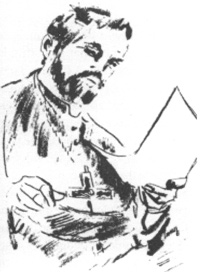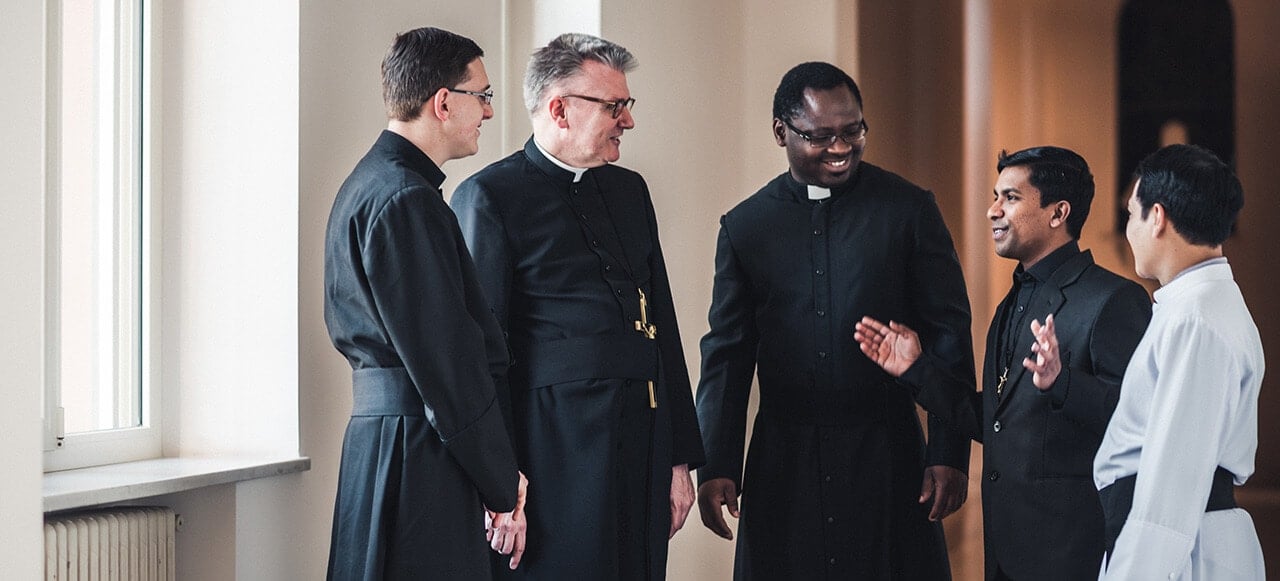
An exploratory voyage
At the time when Father LeBihan, at the request Bishop Allard, attempted to penetrate into this Dutch Transvaal, in 1870, the law forbade the entrance of any priest who was not a minister of the Calvinist faith. Courageously, armed with his cross and placing himself under the protection of the Virgin Mary, the Oblate undertook to visit Catholics working on the Boer farms. For this expedition, he was given a carriage and two horses. Stephanus, a Christian from Roma, accompanied him. For many days, he made frequent stops according to the spiritual needs of the Catholic families along the way. A worthy Irishman, named Donoghue, spontaneously offered him hospitality and lent a hand in the accomplishment of his ministry. Despite the existing law, Father was able to celebrate Mass and instruct the faithful. There was no opposition, but this was only the calm before the storm.
A wedding in jeopardy
The missionary tells us in his travel journal: “A Mister Taggard intended to marry a young Boer lady. The necessary dispensations had already been granted. Everything was ready for the wedding ceremony, when I was summoned to appear before the magistrate. The representative of the law said: ‘I learned that you are about to celebrate a marriage. But are you aware that all exercise of Catholic cult is forbidden by the law of the land?’ I answered that I had heard about it, but had to admit that I had never read that law. An employee then read the text: ‘All religions other than the Dutch Reformed Religion are prohibited in Transvaal.’ Then I asked the magistrate if I could be allowed to pose a simple question. He said: ‘Speak.’ I replied that according to the text of the law which had just been read to me, the prohibition does not apply only to the Catholic Church, but to the Anglican Church and to the Methodist Church as well. However, these two Churches own considerable property in your capital city. They even have temples where they hold public religious services in plain sight and with the knowledge of the authorities. Could you show me the text of the law that permits them to enjoy that freedom? After this remark, the magistrate consulted with his secretary. Following a moment of silence, I was given a sign to leave. It was a way of telling me that I could transgress the law with as much impunity as the others.”
A joyful ceremony
So that the rights of Catholics could be affirmed more openly, Father LeBihan resolved to give the marriage ceremony all possible pomp. He had his carriage decorated with ribbons and flowers. The well polished harnesses shone in the sun. The horses took on frisky airs. Stephanus, dressed like the footman of a high lord, took on an attitude befitting the importance of his role. At the appointed hour, the happy couple assumed their seat in this gala coach and were led with great solemnity to Mr. Donoghue’s residence, where the ceremony was to take place. Father adds: “I took advantage of this occasion to speak on the sanctity of Christian marriage, and on the obligations which it imposes, all according to the preions of the Ritual. After the ceremony, I ordered Stephanus to bring the newlyweds to their home. He proceeded with all the natural majesty at his command.”
André DORVAL, OMI
